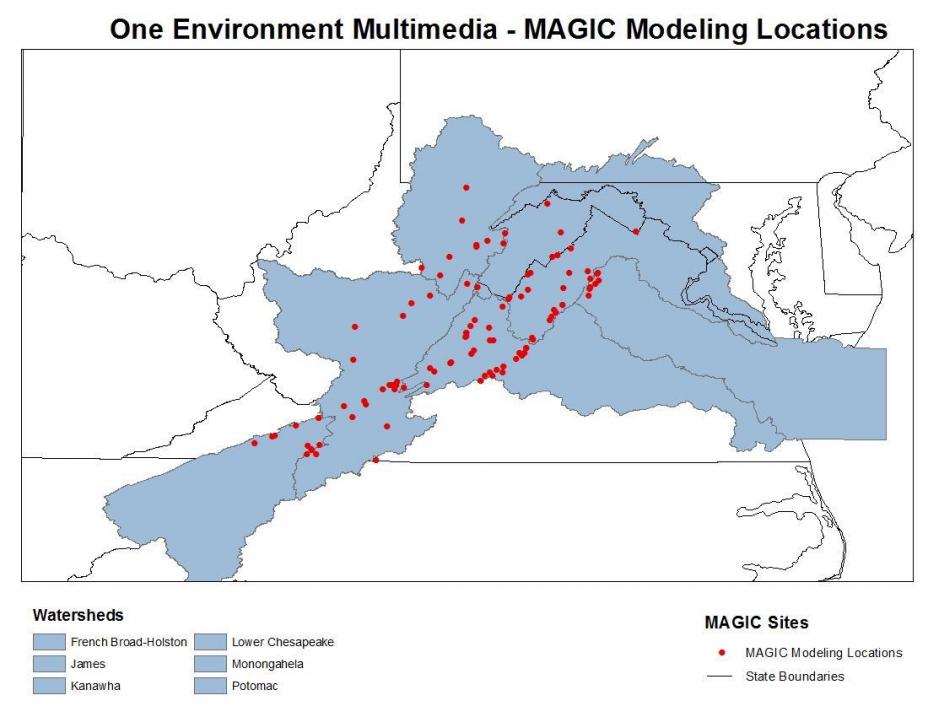Estimating Watershed Acidification using CMAQ

Acidification![]() AcidificationRefers to reducing something's pH, making it more acidic; also means the loss of ANC. of forest soils and acidification and eutrophication
AcidificationRefers to reducing something's pH, making it more acidic; also means the loss of ANC. of forest soils and acidification and eutrophication![]() eutrophicationThe process by which lakes and streams are enriched by nutrients (usually phosphorus and nitrogen) which leads to excessive plant growth. of streams and water bodies continue to endanger the health and productivity of terrestrial and aquatic ecosystems of the northeastern U.S. This is in spite of significant reductions of sulfur and nitrogen emissions and subsequent deposition to underlying surfaces.
eutrophicationThe process by which lakes and streams are enriched by nutrients (usually phosphorus and nitrogen) which leads to excessive plant growth. of streams and water bodies continue to endanger the health and productivity of terrestrial and aquatic ecosystems of the northeastern U.S. This is in spite of significant reductions of sulfur and nitrogen emissions and subsequent deposition to underlying surfaces.
For example, soil acidification can foster potentially toxic levels of biologically available aluminum from previously benign soils. In-stream changes in water chemistry can reduce biodiversity-sensitive biological species and disrupt critical food web dynamics. Research is still needed to improve our understanding of these relationships and to assess the potential environmental consequences of evolving environmental policies and climate. Weather, hydrology and atmospheric deposition observations are often not sufficient to support the detailed small watershed analyses needed to complete such assessments.
This study explores the response of stream water chemistry in the Potomac watershed to the recent atmospheric emission reductions related to the Clean Air Act (CAA). Atmospheric deposition of nitrogen and sulfur species are simulated using the fully coupled WRF-CMAQ model. Watershed hydrology is then simulated using the offline linked Variable Infiltration Capacity (VIC) model driven by the coupled WRF-CMAQ weather.
The response of stream chemistry to emission changes is investigated by combining these CMAQ, WRF, VIC results with the Model of Acidification of Groundwater In Catchment (MAGIC) for the period 2002 to 2010. MAGIC is a lumped-parameter model that simulates soil solution and surface water chemistry. The simulated stream chemistry fits the observation data set well, and the linked system quantifies stream chemistry sensitivities to varying meteorology and air quality.
References
Tang, C., Lynch, J., & Dennis, R. (2016). One Multi-media Environmental System with Linkage between Meteorology/Hydrology/Air Quality Models and Water Quality Model. Presented at the Fall 2016 AGU Meeting, San Francisco, CA, December 14, 2016.
